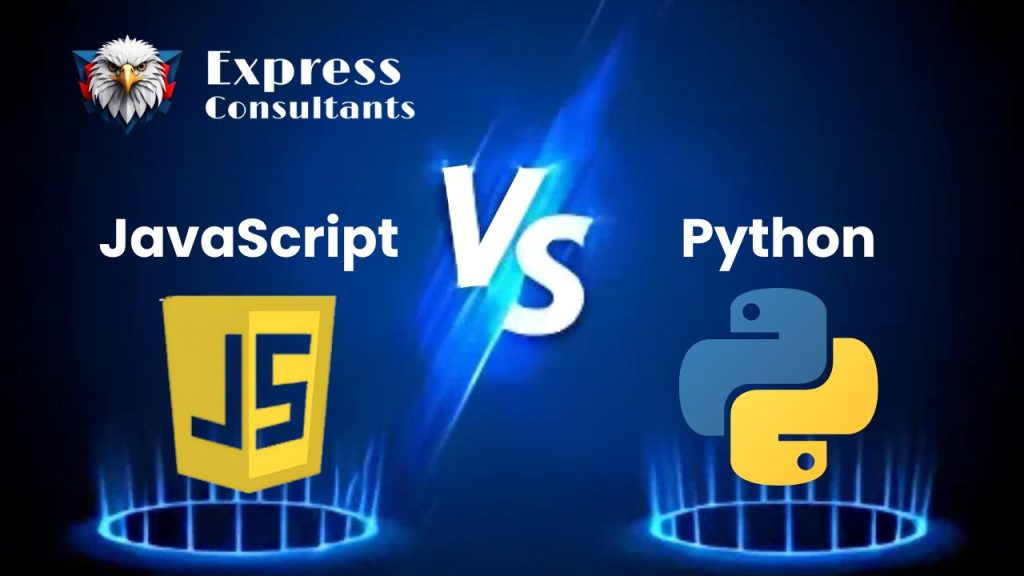
JavaScript vs Python: Understanding the Key Differences
October 19, 2024JavaScript vs Python: Understanding the Key Differences
“Choosing the right programming language is like choosing a tool for a job: you need the right one to get the best results.” Whether you’re a beginner stepping into the world of coding or a seasoned developer trying to decide between two of the most popular languages, JavaScript vs Python is a debate that often comes up. Both languages have their strengths and weaknesses, and picking the right one depends on what you’re looking to achieve. This blog will break down the key differences between these two giants, helping you figure out which language suits your needs.
Understanding JavaScript
JavaScript is like the Swiss Army knife of web development. If you’ve ever visited a website that does something dynamic—like updating content without refreshing, animating buttons, or popping up alerts—there’s a high chance JavaScript is behind it. Introduced in 1995, it’s been the go-to language for adding interactivity to websites, and it runs on pretty much every browser.
What makes JavaScript unique is that it’s a client-side language. In simple terms, the code runs on your browser, not on a server somewhere. This means faster responses and a smoother experience for users. But don’t be fooled into thinking JavaScript is only for the browser, Thanks to platforms like Node.js, it’s now used on the server side too, making it incredibly versatile.
- Great for web apps and front-end development
- Runs in all modern browsers
- Can now be used for back-end development with Node.js
So, if you’re someone who’s passionate about making websites interactive, fun, and user-friendly, JavaScript might just be the language for you. 8 Best JavaScript Backend Frameworks.
Understanding Python
Python, on the other hand, is like the Zen master of programming languages—it’s all about simplicity and readability. Created by Guido van Rossum in the late 1980s, Python emphasizes code that’s easy to read and understand, making it a top choice for beginners and experts alike.
Python’s biggest strength is its versatility. From web development to artificial intelligence, data science, automation, and even game development, Python has a wide range of applications. The syntax is clean, almost like writing plain English, which makes it easy for developers to maintain and debug their code. This simplicity doesn’t mean Python is any less powerful. In fact, it’s the language behind some of the biggest tech companies, including Google, Instagram, and Netflix.
- Simple, easy-to-read syntax
- Ideal for data science, AI, and machine learning
- Strong community support and tons of libraries
If you’re looking to dive into data-heavy fields or want to work on projects that require a lot of automation, Python could be the perfect language to learn.
Key Differences Between JavaScript and Python
| Feature | JavaScript | Python |
| Syntax | Uses curly braces {} and semicolons ; | Simple, clean syntax—reads like English |
| Primary Use | Front-end and back-end web development | General-purpose: web, data science, AI, automation |
| Performance | Faster for web applications, asynchronous capabilities | Slower due to single-threaded nature, but great for computation |
| Learning Curve | Moderate: some quirks and complexity with frameworks | Easy: beginner-friendly with readable syntax |
| Libraries/Frameworks | React, Angular, Vue for front-end, Node.js for back-end | Django, Flask for web; NumPy, Pandas, TensorFlow for data science |
| Job Market | High demand for full-stack developers | High demand for AI, data science, and automation experts |
| Community Support | Strong in web development | Strong in data science and AI |
Now, let’s dive into the details of it—the key differences between JavaScript and Python. Each language shines in its own way, and the choice largely depends on what you’re aiming to build.
- Syntax
- Python’s syntax is simpler and more readable. It’s often said that Python code reads like English. This makes Python easier to learn for beginners.
- JavaScript, while not overly complex, does have some quirks like the use of curly braces {} and semicolons ;, which can trip up new developers.
- Use Cases
- JavaScript is predominantly used for front-end web development but can also be used for back-end development (thanks to Node.js).
- Python is more general-purpose. While it can be used for web development (with frameworks like Django or Flask), it’s also widely used in data science, AI, and scripting.
- Performance
- When it comes to speed, JavaScript has the upper hand in web environments due to its asynchronous capabilities. JavaScript is designed to handle multiple tasks at once, making it better suited for real-time applications like chat apps or gaming.
- Python, while powerful, is slower compared to JavaScript because of its single-threaded nature. However, for tasks that require complex computations, Python’s extensive library support more than makes up for its speed.
- Community and Libraries
- Both languages have strong communities, but Python’s is more geared toward scientific computing, AI, and data science. Python’s extensive libraries, like NumPy and Pandas, make it a favorite in these fields.
- JavaScript has a large ecosystem of frameworks for web development, including React, Vue, and Angular, which make front-end development faster and easier.
When to Choose JavaScript
So, when should you go for JavaScript? Well, if you’re interested in web development, that’s a no-brainer. JavaScript is the language for building interactive websites. Whether you want to animate your page, create real-time updates without refreshing, or handle user inputs dynamically, JavaScript does it all.
It’s also a solid choice if you’re leaning towards full-stack development. With Node.js, you can use JavaScript on both the front end and the back end, which means you’ll only need to learn one language to handle all parts of your web app.
Plus, JavaScript is constantly evolving. With modern frameworks like React and Vue, it’s easier than ever to create powerful, user-friendly interfaces. So if you want a language that’s versatile, widespread, and essential for web development, JavaScript is the way to go.
When to Choose Python
On the flip side, Python excels when it comes to data-heavy applications. If your goal is to dive into fields like machine learning, artificial intelligence, or data analysis, Python is hands down the best choice. Its extensive library support and simple syntax make complex tasks, like building neural networks or analyzing massive data sets, a breeze.
Python is also a great choice if you’re someone who values readability and maintainability in your code. It’s super beginner-friendly, so if you’re just getting started with programming, Python is an easier language to grasp.
Additionally, Python is used extensively in automation, scientific computing, and even game development. So, if your interests lie outside of web development, Python offers a broad range of possibilities.
Learning Curve and Job Market
Learning a new programming language can be intimidating, but the learning curve for JavaScript and Python is relatively gentle compared to other languages like C++ or Java.
- JavaScript might take some time to master due to its quirks and the complexity of front-end frameworks, but it’s highly in demand. Full-stack developers who know JavaScript can find job opportunities in tech startups, agencies, and even established tech giants.
- Python is often considered one of the easiest languages to learn. Because of its simple syntax, new developers can get up and running quickly. And with the growing demand for skills in AI and data science, Python developers are in high demand across industries like finance, healthcare, and tech.
Conclusion
At the end of the day, the choice between JavaScript vs Python comes down to your personal goals and the kind of projects you want to work on. If you’re aiming to become a web developer, JavaScript is essential. On the other hand, if data science, AI, or automation is where your passion lies, Python will serve you better.
Both languages have their strengths, and in some cases, learning both might be the best move. The good news? They’re both widely used, so whichever you pick, you’re setting yourself up for success in the tech world. So, why not dive into both and discover which one resonates with you?
Ready to unlock your business's potential with custom software
Contact Us


